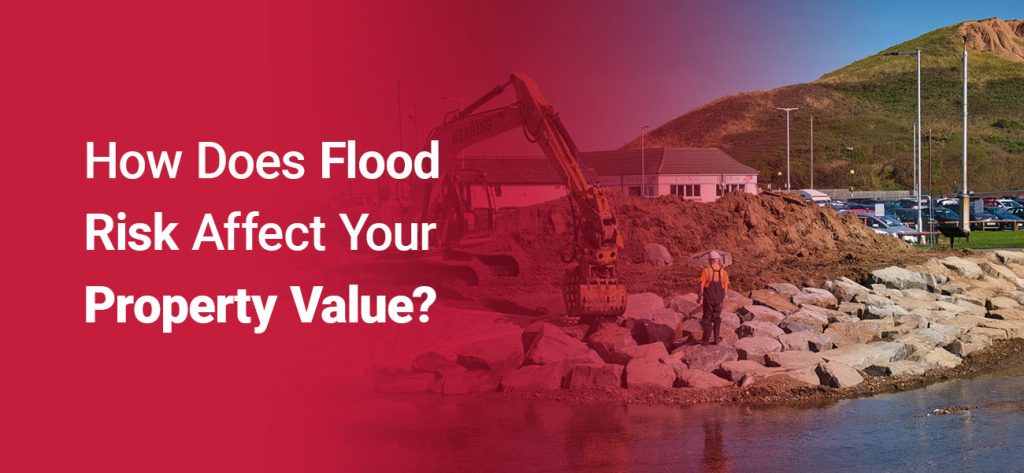
When running a business, a natural disaster is probably the last thing on your mind. However, flooding is becoming an ever-growing issue for commercial property owners and should be taken seriously, as the effect of flooding on property value can be substantial. There are steps you can take to mitigate flood risk, and simply being aware of the risk your business is at can help.
Your property’s flood risk is not just dependent on how close you are to a body of water or how often it rains. There are a lot of factors that go into determining your flood risk, as floods are difficult to predict. Flood risk also goes through changes due to community development and weather changes.
Though we can’t always predict exactly when or where a flood will occur or how severe it will be, there are factors that can help you understand your risk for flooding so you can put protective measures in place.
The Federal Emergency Management Agency (FEMA) has created resources to help understand flood risk in different areas through flood maps and risk assessments.
Flood maps are one of the ways commercial property owners can know how high their flood risk is. Mortgage lenders use flood maps to determine their insurance requirements. Community leaders use flood maps to develop plans for emergency flood scenarios and implement policies to reduce risk based on a realistic expectation of how high the flood threat is. This involves making infrastructure improvements to areas that need it as well as developing their area in the safest way possible.
Commercial property owners can use flood maps to determine where the safest place would be to build or buy a property. If nothing else, you can be prepared in the property you are in, knowing what the risk of flooding is.
You can find your area’s flood map by going to the FEMA Flood Map Service Center (MSC). This will allow you to see your area’s risk for flooding and give you access to other tools you need to be prepared for flooding.
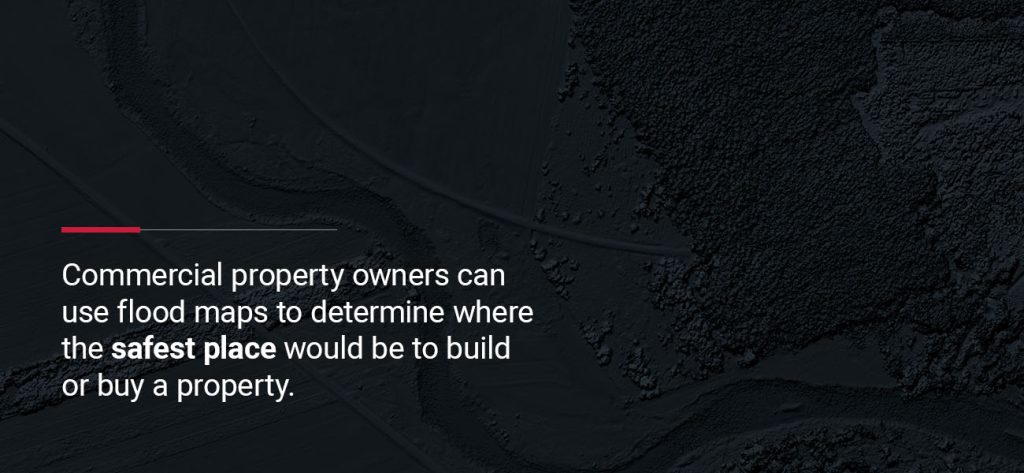
Risk MAP provides data, builds partnerships and allows for long-term hazard mitigation planning. Risk MAP has Flood Risk Products, including maps, reports and databases that can supplement your flood risk management and allow you to create the best hazard mitigation strategies for your area. These products specifically enhance your risk and vulnerability assessment to help determine how to use certain pieces of land or go about developing communities.
Determining the flood risk for your commercial property lets you best prepare logistically and financially for a potential flood. To determine your area’s proportion of commercial properties at risk, you would look at the number of commercial properties at risk in an area and compare that to all the properties in that location.
Once this risk is determined, it’s compared to areas with equivalent geographies before being broken down into a category of risk. These categories are minimal, minor, moderate, major, severe or extreme.
When choosing your property, be aware that selecting a place near a body of water may add an aesthetic element to your business but will also add a liability, as it increases your flood risk. If you do choose to move forward with a property on the water, it’s important that the flood risk has been disclosed upfront so you can do all you can to minimize the risk or prevent damages should flooding occur. This means finding a place where the flood map is publicly available.
However, places where the flooding potential is high may not disclose the property’s flood risk, as that often lowers the property value.
This flood zone impact on property value means you should choose a location that is in a low-risk flood zone, as proximity to high-risk flood zones will lower the property value.
Disclosing the flood risk of a property already decreases its value by approximately 4%. Homes lose significant potential home value following flooding based on what their value could be over time if there had not been a flood. This is something to consider when choosing a home in an area that may be priced lower due to being at a higher risk for flooding.
If you’re unsure where your property stands in terms of flood risk, FEMA flood maps are a good place to start. However, there are other pieces of information you should consider when determining how prepared you should be.
The weather has grown to be more unpredictable over the years. Study the climate change your area has experienced and consider how that could affect your area’s risk for flooding. FEMA may not have taken climate change into consideration for your area’s flood map.
Though analyzing your area for flood risk is essential to protect your property, if your business specifically is in a valley or at the bottom of a steep hill, this should be on your radar, as well. Elevation and surrounding geography can impact your building’s specific flood risk and heighten it compared to other properties in the area.
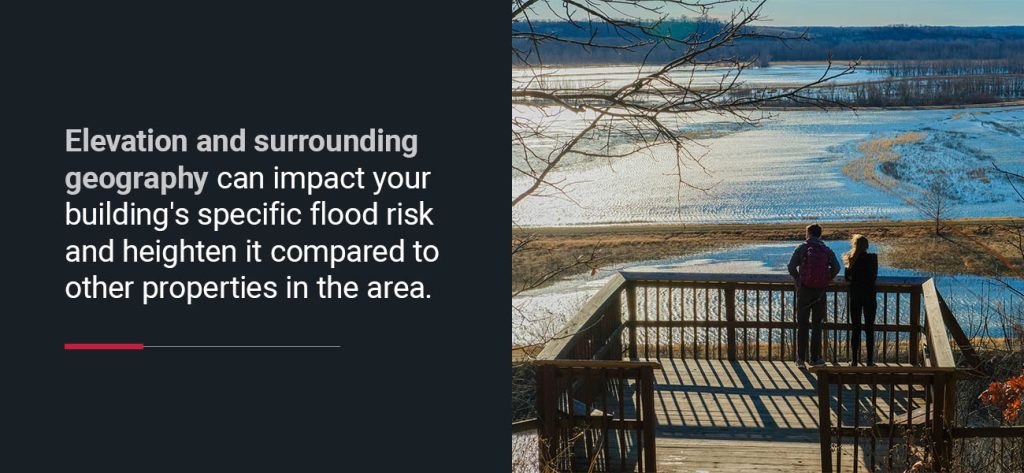
As time goes on, flooding becomes more of a concern for property owners, as the impact of flood risk on property value will rise. Property value is essential to maintain financial well-being, especially if your property makes up a lot of your wealth.
This is why we shouldn’t think of flooding as a future problem but instead as a present concern to prevent potential devastation as much as possible.
Even if your property is not at direct risk for flood damage, if areas in your community are, especially roads, your property value could still be hurt if those roads flood. The impact road flooding will have on your property and community depends on certain factors about those roads and communities, but there will likely be an impact nonetheless.
Experts believe flooding will happen more frequently as climate change continues to change the weather. Flash floods especially have been on the rise in recent years, particularly in urban and developed areas, where many commercial and industrial properties are located.
Flood damage to your property is a concern due to essential restoration and repair services needed, from addressing water damage to needing mold remediation. You should also consider the implications of needing to close your store or not getting any customers due to damages or high waters in your community, which cause a hit to your profits.
Damage to commercial properties due to flooding has an impact that goes beyond the business itself. Commercial properties have a substantial effect on the economy, from providing jobs to other essential services. When they are damaged by circumstances such as flooding, so is the local economy.
With flooding increasing so consistently, experts expect it to cause billions of dollars in damage by various means in coming years. According to CNBC, about 730,000 commercial properties in the United States are at risk for flood damage every year.
It was expected heading into 2022 that structural damage to commercial properties from flood damage would cost $13.5 billion. This included both flash floods and sea-level rise. By 2052, experts expect the same damages to cost commercial properties over $16.9 billion.
When the damage done to productivity and local economies was factored in, experts expect to see $49.9 billion in damages in 2022, which may increase to $63.1 billion by 2052. This affects the owners of these businesses, their customers and investors in their business.
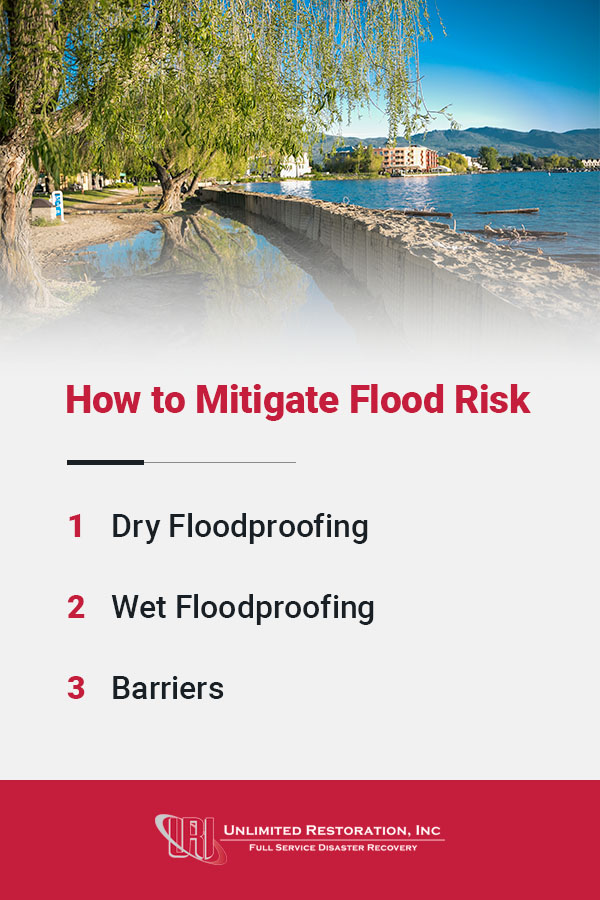
Elevating your building is the most surefire way to limit the risk your commercial property faces in the event of a flood. If your building cannot be raised, there are other steps you can take to keep your space as safe as possible.
First of all, it is important to know your area’s base flood elevation. This is the height floodwaters rise to during the base flood, which is the flood that has a 1% chance of happening every year. It could get to just that height or exceed it.
Along with that knowledge, you can take action for your commercial property. The following is a list of different types of protection methods, each maintaining a different aspect of your building.
The concept of dry floodproofing is simple — seal off your building so floodwaters cannot enter. This involves using waterproof coatings or coverings that keep water from coming through the walls. There are also devices you can install to prevent your building from having sewer or drain backup.
You can install a passive dry floodproofing system, which will work without you having to be involved. The coating is constructed no more than three feet above ground level and keeps your building floodproof at least to the base flood elevation, if not higher.
Dry floodproofing is most effective when utility meters are elevated and other prevention devices are installed below water and sewer lines. Make sure your walls and floor slabs are enforced so they can stand up to the added pressure of potential standing water.
This is normally a large investment but will last between 15 and 30 years despite needing annual maintenance. The size of your building will ultimately determine whether dry floodproofing is the right course of action for your business.
Wet floodproofing gives floodwaters a way to enter and exit your building and create as minimal damage as possible. Doing this allows the water level to stay equal both inside and outside your building, which limits the pressure and keeps the walls from caving in. This would take place in a part of the building that is not used often by people, such as a crawlspace or basement.
To implement wet floodproofing, one would install openings in the foundation of the building as well as enclosure walls that are below the base flood elevation. These openings would not require human involvement but would automatically allow the water to enter and exit the building.
This method has proven to reduce structural damage to buildings, as the damage often comes from the water putting pressure on just one side rather than all sides of a building. The key to the success of wet floodproofing is that the openings do open automatically. It’s important to test them regularly and make sure they are not jammed.
This option is low-cost upfront and over time in terms of maintenance. Wet floodproofing solutions often have a life of 15 to 20 years.
Rather than making adjustments to your building itself, you can consider adding barriers around it to contain or limit the floodwaters that get to your property. Floodwalls and levees are two common types of barriers, both meant to hold back floodwater:
Floodwalls and levees can be built with or without gates, both providing a different set of benefits. Barriers with gates have passive flood gates that open or close automatically based on the water pressure, similar to how wet floodproofing works. Barriers without gates are often built with some sort of ramp or stairs for pedestrians.
If used along with a pump system, barriers around your property can provide an effective way to protect your building from damage due to flooding. They are cost-effective but have a clear limit to their effectiveness if floodwaters exceed a certain height.
Choosing the mitigation method that is right for your commercial property does not have a straightforward answer. The same factors that determine how high your business’s flood risk is should go into how you protect it from the floodwaters. For example, if you live on the coast and could experience more intense flooding, consider implementing several methods focused on evening out the water pressure rather than eliminating it altogether.
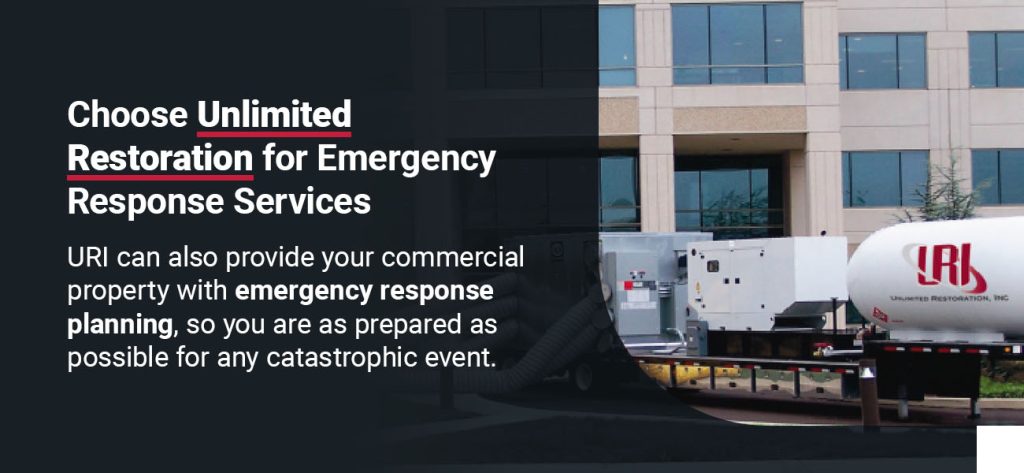
Unlimited Restoration is available 24 hours a day, so if floodwater invades your business, we can offer prompt, efficient recovery — the best way to minimize damage and speed up recovery time. If floodwaters invade your business, your first course of action should be to make sure everyone is out of the building. Then contact URI to begin the cleanup process safely and efficiently.
URI can also provide your commercial property with emergency response planning, so you are as prepared as possible for any catastrophic event. This will minimize the physical and financial damage to your business and could be lifesaving. Learn more about emergency response planning and request a free plan for your business.